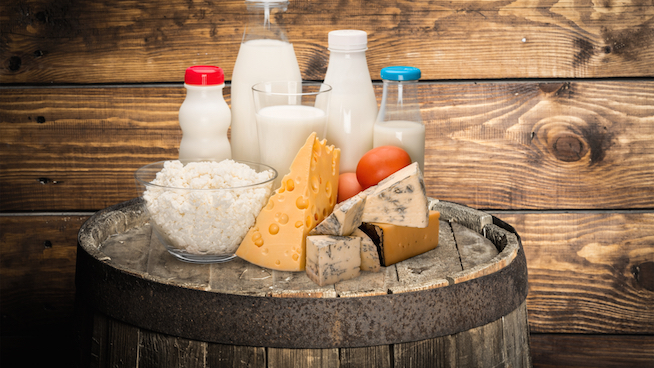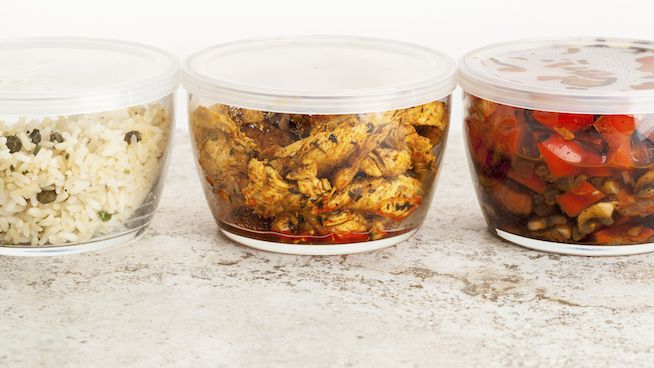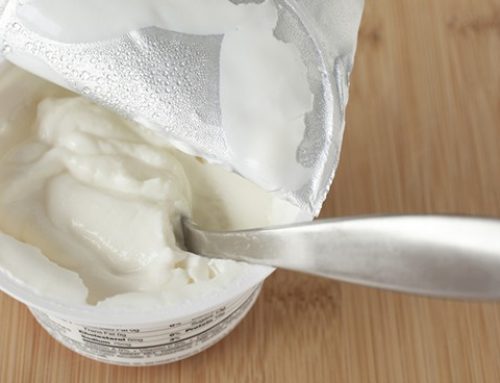This Rare Compound Found in Watermelon Improves Endurance, Reduces Fatigue and Makes You a Better Overall Athlete
Watermelon is a favorite summertime snack, but if you’re munching on it only at the occasional barbecue, you’re missing out. Watermelon is a nutritional powerhouse, chock full of nutrients and compounds that help the human body function at a high level. It also contains a rare type of amino acid that’s been shown to have spectacular benefits on athletic performance and body composition. Here’s why every athlete needs to make room on his or her plate for watermelon.
A Well-Rounded Fruit

The basic nutrition facts for watermelon are rock solid.
One serving contains less than 100 calories and no saturated fat. There’s also 314 mg of potassium (about 8 percent of the standard daily value), which is great for preventing cramps and maintaining optimal fluid balance. Vitamin A and vitamin C are also abundant, helping fight off viruses and maintain healthy skin, eyes, teeth, cells and body systems. Twenty-one grams of carbohydrates per serving makes watermelon an ideal pre-workout snack, and its ridiculously high water content (watermelon is more than 90 percent water by weight) helps keep you hydrated.
The nutrition facts for watermelon are impressive, but the real magic lies in compounds that don’t show up on the label.
RELATED: Turmeric: Is This Supposed Miracle Food The Real Deal?
For one, watermelon is high in lycopene. Often associated with tomatoes, lycopene is even more plentiful in watermelon, 1.5 times the amount in a large fresh tomato. That’s good news for watermelon lovers, because there’s a growing amount of evidence that lycopene could have positive effects throughout the body. Though more research needs to be done, lycopene consumption may have a beneficial impact on coronary artery disease, eye disorders, heart disease, high blood pressure, infertility and different forms of cancer. Lycopene has also been found to be an effective reducer of inflammation, making it excellent for athlete recovery.
Lycopene has amazing benefits, but the single most impressive compound in watermelon might be citrulline.
Citrulline: The Athlete’s Amino Acid

Citrulline is a non-essential amino acid, and there are very few sources of it in the standard American diet. It can be found in onions, garlic, garbanzo beans, liver and walnuts, but watermelon is undoubtedly the best source of this rare compound. The flesh, rind and seeds of watermelon all contain citrulline, though the rind seems to be where it’s most abundant.
Once consumed, citrulline is converted into arginine, a different amino acid. Why not just cut to the chase and consume arginine-heavy foods? Because citrulline actually results in higher, more-sustained levels of arginine than supplementing with arginine. Yeah, the human body is weird. Arginine helps with a number of bodily processes, notably the removal of ammonia. Exercise releases ammonia into the bloodstream, but too much of it can lead to fatigue and exhaustion. Arginine seems to help flush ammonia out of the body more efficiently. This might have something to do with the increased production of nitric oxide that occurs when citrulline is converted into arginine.
RELATED: Feed for Speed: 5 Foods and Supplements That Make You Faster
Nitric oxide is a vasodilator, meaning it relaxes blood vessels throughout the body, allowing blood to pump more efficiently. This in turn lowers the amount of oxygen you have to consume during exercise, making you a more efficient athlete. Although eating other nitrogen-rich foods can boost your nitric oxide production, the bodily process of converting citrulline into arginine seems to have extra benefits—especially for athletes. “[Watermelon] is a natural source of citrulline,” says Tara Ostrowe, RD and nutritionist for the New York Giants. “Citrulline, a non-essential amino acid, has been found to enhance aerobic capacity and reduce muscle fatigue.”
RELATED: Fuel Up With These 4 Smoothie Recipes From The NY Giants’ Nutritionist
A 2015 study in the Journal of Strength & Conditioning Research looked at how citrulline malate supplementation effected repeated bouts of lower-body exercise in advanced weightlifters. Each participant performed five sets of three exercises—Leg Presses, Hack Squats and Leg Extensions. Sixty percent of the lifters’ one-rep max was used as the load, and each set was performed until failure. The athletes who supplemented with 8 grams of citrulline malate prior to lifting performed a significantly higher number of repetitions of all three exercises. “Our results suggest citrulline malate supplementation may be beneficial in improving exercise performance during lower-body multiple-bout resistance exercise,” the authors concluded.
A 2002 study in the Journal of Sports Medicine found supplementing daily with 6 grams of citrulline malate led to a significant reduction in fatigue sensation and a higher production of ATP during exercise. ATP is short for Adenosine Triphosphate, which is the basic form of energy used by the body. A higher supply of ATP leads to greater aerobic capacity. A 2010 study in the Journal of Strength & Conditioning Research found supplementing with 8 grams of citrulline malate prior to a heavy Bench Press training workout allowed participants to achieve a greater number of repetitions and suffer less soreness the next day. “Citrulline malate might be useful to increase athletic performance in high-intensity anaerobic exercises with short rest time and to relieve post-exercise muscle soreness,” the authors concluded.
RELATED: STACK Science: Become a Better Athlete By Understanding Energy Production
So, citrulline supplementation has been linked to better performance during both anaerobic and aerobic exercise as well as reduced fatigue and quicker recovery. While there’s still research to be done, there’s little doubt that citrulline delivers an impressive payoff to athletes. “L-Citrulline is used as a sports performance and cardiovascular health supplement. L-Citrulline supplementation results in reduced fatigue and improved endurance for both aerobic and anaerobic prolonged exercise,” writes Examine.com, an independent site that collates scientific research and disseminates information on supplementation and nutrition.
As if the performance benefits of citrulline weren’t impressive enough, it could also have a powerful effect on body composition. Research in this field is still developing, but a 2015 study in the Journal of Nutrition found citrulline supplementation over a 12-week period led to 9 percent gain in lean body mass and a 13 percent reduction in fat mass in male rats.
So, how much citrulline should you ingest to reap the benefits?
The exact number can vary depending on variety, but a cup of watermelon contains roughly 250-300 mg of citrulline. That’s quite a bit less than was used in the aforementioned studies; however, that doesn’t mean you cannot experience citrulline-related benefits via the fruit.
A 2013 study in the Journal of Agricultural and Food Chemistry found that drinking half a liter of unpasteurized watermelon juice before an intense bike ride helped participants avoid leg soreness the next day. Participants who took the placebo reported feeling sore. The researchers also found that the body absorbed the citrulline in unpasteurized watermelon juice better than it did from a citrulline supplement. Plus, as discussed above, watermelon contains a boatload of other useful nutrients besides citrulline.
However, if you’re interested in consuming larger doses of citrulline, supplementation is more convenient. Examine.com recommends taking 6,000-8,000 milligrams of citrulline malate about an hour before exercise to enhance your sports performance.
RECOMMENDED FOR YOU
This Rare Compound Found in Watermelon Improves Endurance, Reduces Fatigue and Makes You a Better Overall Athlete
Watermelon is a favorite summertime snack, but if you’re munching on it only at the occasional barbecue, you’re missing out. Watermelon is a nutritional powerhouse, chock full of nutrients and compounds that help the human body function at a high level. It also contains a rare type of amino acid that’s been shown to have spectacular benefits on athletic performance and body composition. Here’s why every athlete needs to make room on his or her plate for watermelon.
A Well-Rounded Fruit

The basic nutrition facts for watermelon are rock solid.
One serving contains less than 100 calories and no saturated fat. There’s also 314 mg of potassium (about 8 percent of the standard daily value), which is great for preventing cramps and maintaining optimal fluid balance. Vitamin A and vitamin C are also abundant, helping fight off viruses and maintain healthy skin, eyes, teeth, cells and body systems. Twenty-one grams of carbohydrates per serving makes watermelon an ideal pre-workout snack, and its ridiculously high water content (watermelon is more than 90 percent water by weight) helps keep you hydrated.
The nutrition facts for watermelon are impressive, but the real magic lies in compounds that don’t show up on the label.
RELATED: Turmeric: Is This Supposed Miracle Food The Real Deal?
For one, watermelon is high in lycopene. Often associated with tomatoes, lycopene is even more plentiful in watermelon, 1.5 times the amount in a large fresh tomato. That’s good news for watermelon lovers, because there’s a growing amount of evidence that lycopene could have positive effects throughout the body. Though more research needs to be done, lycopene consumption may have a beneficial impact on coronary artery disease, eye disorders, heart disease, high blood pressure, infertility and different forms of cancer. Lycopene has also been found to be an effective reducer of inflammation, making it excellent for athlete recovery.
Lycopene has amazing benefits, but the single most impressive compound in watermelon might be citrulline.
Citrulline: The Athlete’s Amino Acid

Citrulline is a non-essential amino acid, and there are very few sources of it in the standard American diet. It can be found in onions, garlic, garbanzo beans, liver and walnuts, but watermelon is undoubtedly the best source of this rare compound. The flesh, rind and seeds of watermelon all contain citrulline, though the rind seems to be where it’s most abundant.
Once consumed, citrulline is converted into arginine, a different amino acid. Why not just cut to the chase and consume arginine-heavy foods? Because citrulline actually results in higher, more-sustained levels of arginine than supplementing with arginine. Yeah, the human body is weird. Arginine helps with a number of bodily processes, notably the removal of ammonia. Exercise releases ammonia into the bloodstream, but too much of it can lead to fatigue and exhaustion. Arginine seems to help flush ammonia out of the body more efficiently. This might have something to do with the increased production of nitric oxide that occurs when citrulline is converted into arginine.
RELATED: Feed for Speed: 5 Foods and Supplements That Make You Faster
Nitric oxide is a vasodilator, meaning it relaxes blood vessels throughout the body, allowing blood to pump more efficiently. This in turn lowers the amount of oxygen you have to consume during exercise, making you a more efficient athlete. Although eating other nitrogen-rich foods can boost your nitric oxide production, the bodily process of converting citrulline into arginine seems to have extra benefits—especially for athletes. “[Watermelon] is a natural source of citrulline,” says Tara Ostrowe, RD and nutritionist for the New York Giants. “Citrulline, a non-essential amino acid, has been found to enhance aerobic capacity and reduce muscle fatigue.”
RELATED: Fuel Up With These 4 Smoothie Recipes From The NY Giants’ Nutritionist
A 2015 study in the Journal of Strength & Conditioning Research looked at how citrulline malate supplementation effected repeated bouts of lower-body exercise in advanced weightlifters. Each participant performed five sets of three exercises—Leg Presses, Hack Squats and Leg Extensions. Sixty percent of the lifters’ one-rep max was used as the load, and each set was performed until failure. The athletes who supplemented with 8 grams of citrulline malate prior to lifting performed a significantly higher number of repetitions of all three exercises. “Our results suggest citrulline malate supplementation may be beneficial in improving exercise performance during lower-body multiple-bout resistance exercise,” the authors concluded.
A 2002 study in the Journal of Sports Medicine found supplementing daily with 6 grams of citrulline malate led to a significant reduction in fatigue sensation and a higher production of ATP during exercise. ATP is short for Adenosine Triphosphate, which is the basic form of energy used by the body. A higher supply of ATP leads to greater aerobic capacity. A 2010 study in the Journal of Strength & Conditioning Research found supplementing with 8 grams of citrulline malate prior to a heavy Bench Press training workout allowed participants to achieve a greater number of repetitions and suffer less soreness the next day. “Citrulline malate might be useful to increase athletic performance in high-intensity anaerobic exercises with short rest time and to relieve post-exercise muscle soreness,” the authors concluded.
RELATED: STACK Science: Become a Better Athlete By Understanding Energy Production
So, citrulline supplementation has been linked to better performance during both anaerobic and aerobic exercise as well as reduced fatigue and quicker recovery. While there’s still research to be done, there’s little doubt that citrulline delivers an impressive payoff to athletes. “L-Citrulline is used as a sports performance and cardiovascular health supplement. L-Citrulline supplementation results in reduced fatigue and improved endurance for both aerobic and anaerobic prolonged exercise,” writes Examine.com, an independent site that collates scientific research and disseminates information on supplementation and nutrition.
As if the performance benefits of citrulline weren’t impressive enough, it could also have a powerful effect on body composition. Research in this field is still developing, but a 2015 study in the Journal of Nutrition found citrulline supplementation over a 12-week period led to 9 percent gain in lean body mass and a 13 percent reduction in fat mass in male rats.
So, how much citrulline should you ingest to reap the benefits?
The exact number can vary depending on variety, but a cup of watermelon contains roughly 250-300 mg of citrulline. That’s quite a bit less than was used in the aforementioned studies; however, that doesn’t mean you cannot experience citrulline-related benefits via the fruit.
A 2013 study in the Journal of Agricultural and Food Chemistry found that drinking half a liter of unpasteurized watermelon juice before an intense bike ride helped participants avoid leg soreness the next day. Participants who took the placebo reported feeling sore. The researchers also found that the body absorbed the citrulline in unpasteurized watermelon juice better than it did from a citrulline supplement. Plus, as discussed above, watermelon contains a boatload of other useful nutrients besides citrulline.
However, if you’re interested in consuming larger doses of citrulline, supplementation is more convenient. Examine.com recommends taking 6,000-8,000 milligrams of citrulline malate about an hour before exercise to enhance your sports performance.










